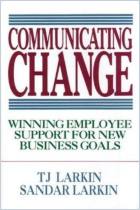
Recommendation
With sections on e-mail etiquette, Maslow’s hierarchy of needs, communication theory, paginating a publication and running meetings, authors Lyn Smith and Pamela Mounter attempt to cover a lot of territory in the field of internal communication. Unfortunately, they end up being overly general and diffuse. In addition, they are oriented toward the United Kingdom, and their language and some of their corporate examples assume that the reader is familiar with events there. So, this book may not be terribly useful for American readers or for those who already have experience in internal corporate communication. getAbstract recommends it to anyone who needs a primer on why internal communication is increasingly important in the corporate world.
Summary
About the Author
Lyn Smith has worked in communication for more than 30 years, starting out in film publicity, and later moving into internal communication. She runs a public relations firm. Pamela Mounter is a senior corporate communication consultant. She has written about internal communication for academic and general publications.












Comment on this summary